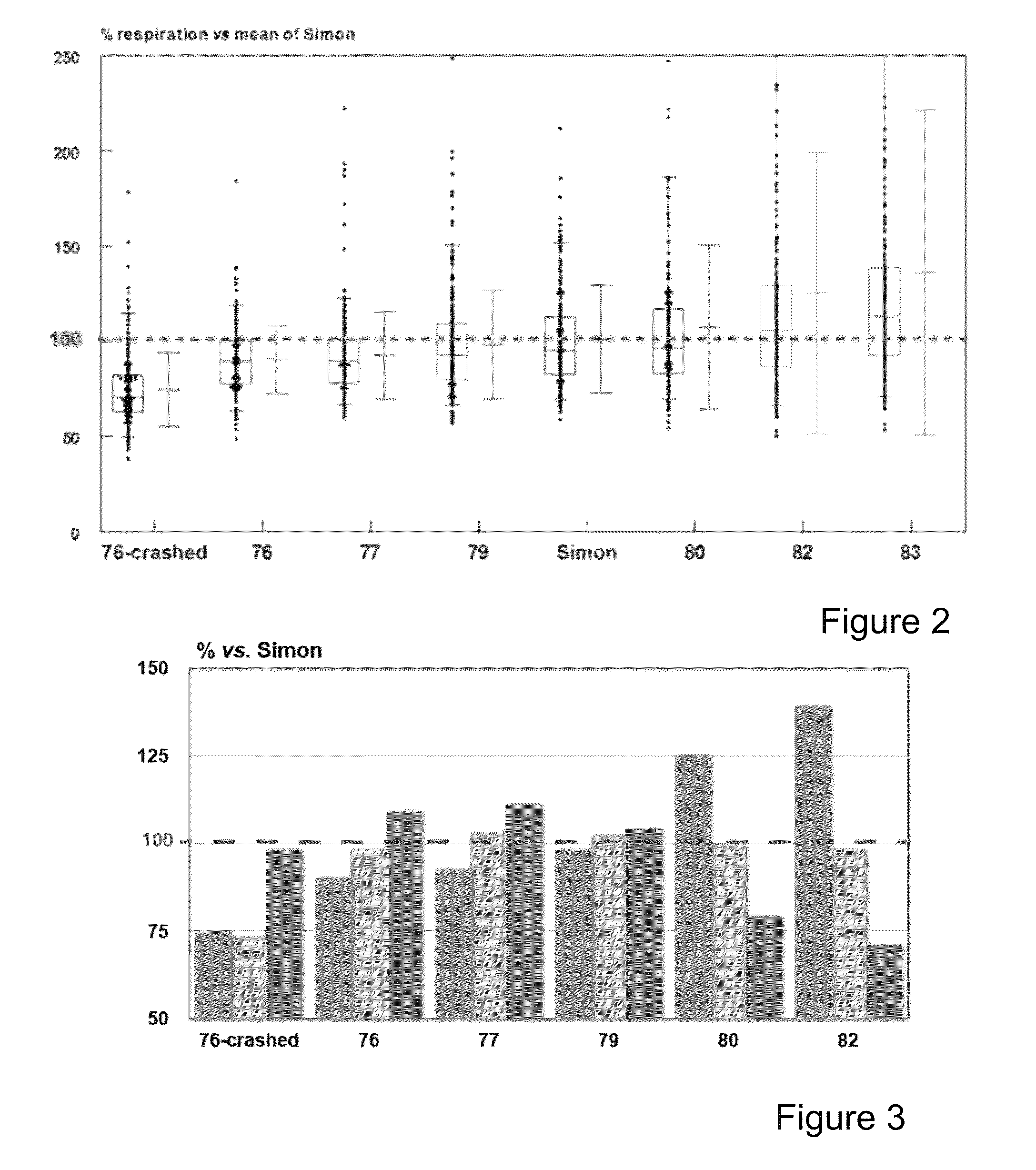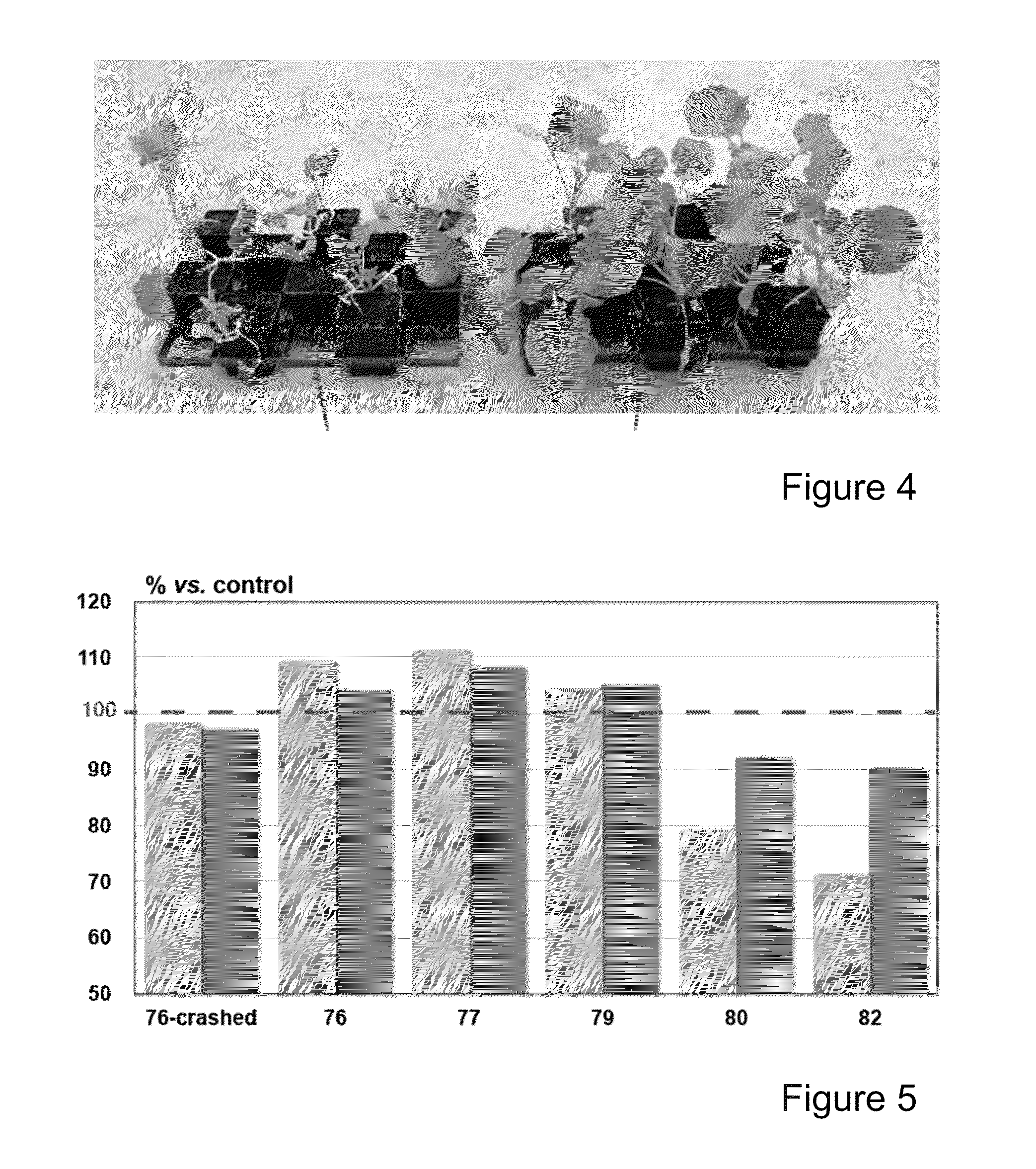Increase of yield in crop plants through selection of epigenetically modified populations
a technology of epigenetically modified populations and crop plants, applied in the field of agriculture, can solve the problems of increasing the difficulty of achieving sufficient quantity and quality, deterioration of areas, and shrinking of suitable or available areas for agriculture, and achieves the effects of increasing yield potential, high energy use efficiency, and high energy use efficiency
- Summary
- Abstract
- Description
- Claims
- Application Information
AI Technical Summary
Benefits of technology
Problems solved by technology
Method used
Image
Examples
example 1
Methodology
[0095]Artificial selection for respiration and EUE. Seedlings were grown in vitro for two weeks on agar medium half concentrated Murashige and Skoog medium supplemented with 2% sucrose. The shoot tips of the seedlings were put on the above medium for rooting, while five hypocotyl explants per seedling were cultured for five days on callus inducing medium (Murashige and Skoog medium supplemented with 3% sucrose and 1 mg / L 2,4-D, 0.25 mg / L NAA and 1 mg / L BAP). Cellular respiration of the hypocotyl explants was measured. The rooted shoot tips of about five seedlings with the highest respectively lowest respiration were transferred to the greenhouse for seed production by selfing. Both respiration and NAD(P)H content of about 35-40 seedlings of the obtained progenies were measured. Lines with the lowest, respectively, highest respiration and highest, respectively, lowest energy use efficiency were retained. The next rounds of selections were done in one direction for lower or...
example 2
Selection and Characterization of Selected Brassica napus Plants with High and Low Energy Use Efficiency
[0099]Starting from an isogenic doubled haploid B. napus line to eliminate variation due to differences at the genetic level, seedlings with the lowest and highest cellular respiration were identified and retained (see ‘Methods Summary’-FIG. 1 shows a schematic presentation of the selection scheme). In summary, starting from 200 seedlings from the doubled haploid population ‘Simon’ seedlings with the lowest and highest cellular respiration were identified and retained. Rooted shoot tips of five seedlings with the highest and lowest respiration, respectively, were transferred to the greenhouse for seed production by selfing. Two populations with respectively the lowest and highest EUE were identified. These two populations were the starting material for five additional rounds of selection for lines with higher and lower respiration rates, respectively. FIG. 2 shows the respiration ...
example 3
Selection and Characterization of Selected Brassica napus Plants with High Energy Use Efficiency Combined with Enhanced Drought Tolerance
[0108]Brassica napus plants were selected as described in Example 2, except that the callus inducing media now contained PEG6000 at a 5% end concentration, mimicking drought conditions. The best line exhibiting high energy use efficiency (LR-PEG—1574) under these growth conditions were grown in comparison with control plants under normal watering conditions and under conditions of restricted water supply. FIGS. 12 and 13 provide a summary of the results of these experiments, demonstrating that LR-PEG—1574 outperforms control plants (isogenetic but not subjected to the high energy use efficiency selection methods) under drought conditions.
PUM
| Property | Measurement | Unit |
|---|---|---|
| weight | aaaaa | aaaaa |
| weight | aaaaa | aaaaa |
| time | aaaaa | aaaaa |
Abstract
Description
Claims
Application Information
 Login to View More
Login to View More - R&D
- Intellectual Property
- Life Sciences
- Materials
- Tech Scout
- Unparalleled Data Quality
- Higher Quality Content
- 60% Fewer Hallucinations
Browse by: Latest US Patents, China's latest patents, Technical Efficacy Thesaurus, Application Domain, Technology Topic, Popular Technical Reports.
© 2025 PatSnap. All rights reserved.Legal|Privacy policy|Modern Slavery Act Transparency Statement|Sitemap|About US| Contact US: help@patsnap.com



